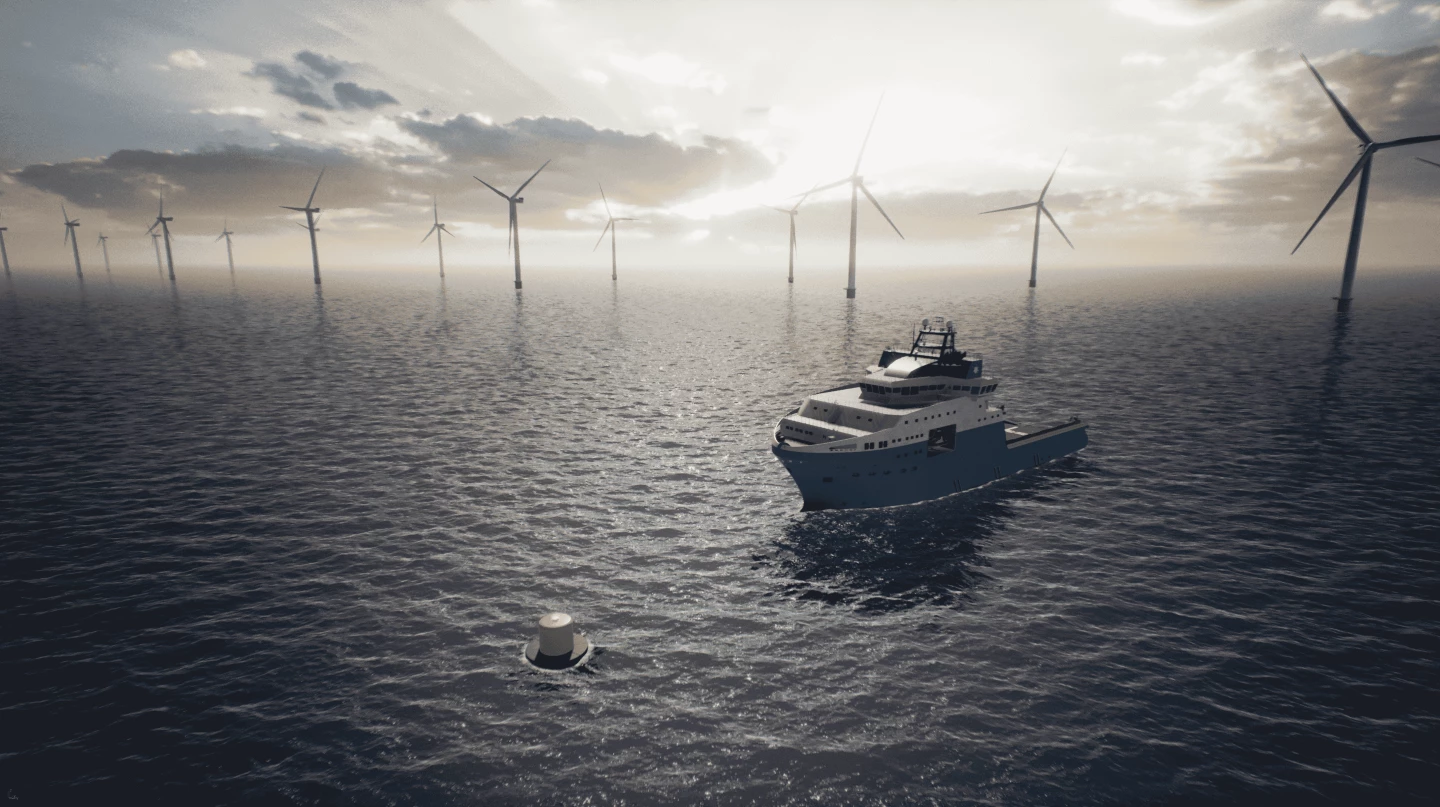Shipping giant Maersk is teaming up with Danish energy company Ørsted on a new venture hoped to cut into the carbon emissions generated by vessels idling offshore. Their solution is a purpose-built charging buoy that supplies power to ships moored overnight, with the first demonstration expected to take place at an offshore wind farm towards the end of the year.
Shipping is a noteworthy contributor to the greenhouse gases accumulating in the atmosphere, responsible for around three percent of total emissions as vessels powered by fossil fuels carry cargo around the globe. And even when on standby, these vessels burn fuel for auxiliary operations, such as powering winches, air-conditioning systems or fuel pumps.
Through its spin-off venture Stillstrom, Maersk is looking to eat into these emissions by channeling clean and renewable energy instead. Idling ships can safely moor to the charging buoy, which is said to be large enough to charge a battery onboard a service operation vessel (SOV) or a hybrid electric vessel. Maersk says the technology can also be scaled up to supply power to larger vessels, enabling ships of all sizes to shut down their engines when idling.

Having been chipping away at the technology over the past couple of years, Maersk and Ørsted are now preparing to demonstrate what they describe as the world's first full-scale offshore charging station. The installation is slated for the third quarter of this year, with the buoy to be integrated into an Ørsted wind farm in the North Sea. There, it will use clean energy to provide overnight power to one of Ørsted's SOVs.
'Our vision at Stillstrom is to enable maritime decarbonization, by providing the infrastructure that will allow vessels to charge from clean energy when idle offshore," said Sebastian Klasterer Toft, Venture Programme Manager at Maersk Supply Service. "The mission is to remove 5.5 million tons of CO2 within five years of commercial rollout, additionally eliminating particulate matter, NOx, and SOx."
The video below provides an overview of the project.
Source: Stillstrom





